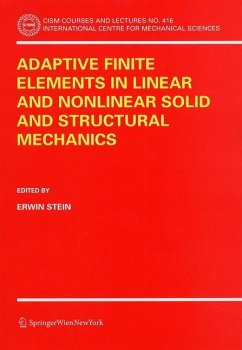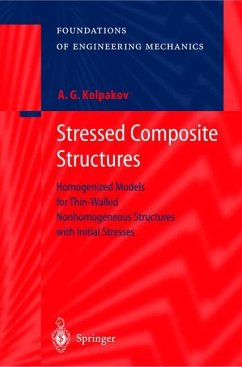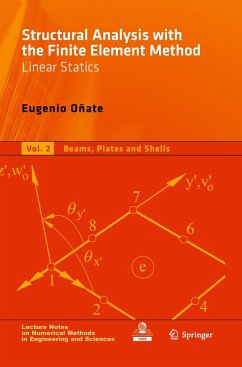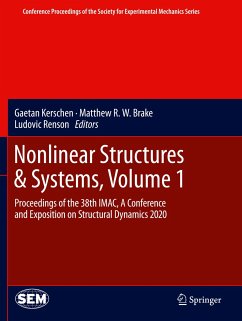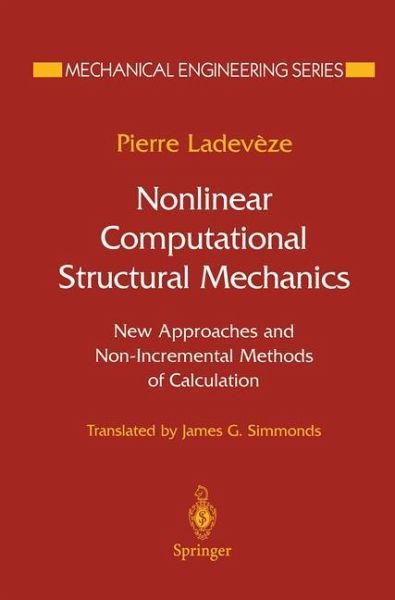
Nonlinear Computational Structural Mechanics
New Approaches and Non-Incremental Methods of Calculation
Übersetzung: Simmonds, J.G.
Versandkostenfrei!
Versandfertig in 1-2 Wochen
38,99 €
inkl. MwSt.
Weitere Ausgaben:

PAYBACK Punkte
19 °P sammeln!
This book treats computational modeling of structures in which strong nonlinearities are present. It is therefore a work in mechanics and engineering, although the discussion centers on methods of solution and approximation that are classically considered as parts of applied mathematics. The goal is to simulate numerically the behavior of a structure under various imposed excitations, forces, and displacements, and then to determine the resulting damage to the structure, and ultimately to optimize the structure to minimize the damage subject to various constraints. Practical applications of the methods include design and optimization of structures and analyses of their reliability. The method used is iterative: at each stage one computes an approximation to the displacements, strains, and stresses everywhere in the structure and for all times in the interval of interest. The method rests on some remarkable properties satisfied by most of the models encountered in structural mechanics, and it leads to a general approach for understanding structural models and the necessary approximations.
Mechanical Engineering, an engineering discipline borne of the needs of the in dustrial revolution, is once again asked to do its substantial share in the call for industrial renewal. The general call is urgent as we face profound issues of pro ductivity and competitiveness that require engineering solutions, among others. The Mechanical Engineering Series features graduate texts and research mono graphs intended to address the need for information in contemporary areas ofme chanical engineering. The series is conceived as a comprehensive one that covers a broad range of concentrations important to mechanical engineering graduate education and re search. We are fortunate to have a distinguished roster ofconsulting editors on the advisory board, each an expert in one ofthe areas ofconcentration. The names of the consulting editors are listed on the next page of this volume. The areas of concentration are applied mechanics, biomechanics, computational mechanics, dynamic systems andcontrol, energetics, mechanics ofmaterials, processing, ther mal science, and tribology. Frederick A. Leckie,the series editor for applied mechanics, and I are pleased to presentthis volume in the Series: Nonlinear Computational Structural Mechan ics: New Approaches and Non-Incremental Methods of Calculation, by Pierre Ladeveze. The selection of this volume underscores again the interest of the Me chanical Engineering series to provide our readers with topical monographs as well as graduate texts in a wide variety of fields.





